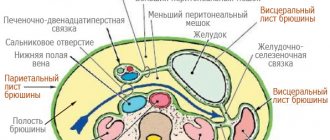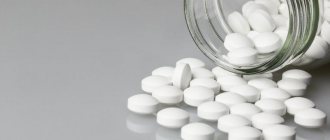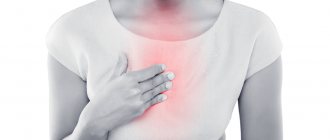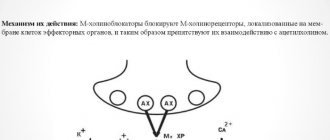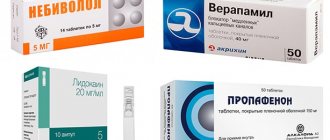From our school human anatomy course, we remember that the liver is the largest digestive gland in the human body, as well as one of the main “filters” in the body, protecting us from toxicants. Pathological processes in the liver can be divided into several classes. The first is the actual effect of toxic substances (alcohol, some drugs, chemicals, etc.). The second is exposure to viruses. The third is conditions associated with dystrophic changes in hepatocytes (fatty and pigmented hepatoses). In addition, some conditions are accompanied by difficulty in the removal of bile and its “stagnation” in the bile ducts (cholestasis), including inside the liver. Since a person is constantly exposed to factors unfavorable for the liver, many people subconsciously want to “support” or “treat” this organ. These people often come to the pharmacy for advice. Our guide is intended to help the chief captain competently advise such a visitor and help him choose an effective medicine for the liver.
Hepatoprotectors are a whole class of drugs of various origins designed to support the functional abilities of the liver, restoring damaged cells and increasing their resistance to toxicants.
Strictly speaking, at the moment there is no single generally accepted classification of hepaprotectors. Here is the division option most used in practice (1, 2):
Classification and characteristics of hepatoprotectors by type of origin and primary mechanism of action
| Herbal preparations | Based on milk thistle. Licorice based. Based on other plants |
| Preparations of animal origin | Based on animal liver. Derived from placenta |
| Preparations based on essential phospholipids | Based on essential phospholipids. Combination preparations containing essential phospholipids |
| Preparations with a predominantly detoxifying effect | With a predominantly direct detoxifying effect (ornithine aspartate, arginine glutamate). With a predominantly indirect detoxifying effect:
|
| Bile acid preparations | Ursodeoxycholic acid |
| Drugs of other groups | Thioctic acid. Vitamins and antioxidants |
Types of liver damage
- Infectious diseases (viral hepatitis).
- Toxic lesions (alcohol, drugs, etc.).
- Autoimmune diseases.
- Diffuse lesions of the liver parenchyma (metabolic disorders).
- Vascular pathologies of the liver.
- Storage diseases (hemochromatosis, etc.).
- Liver helminthiasis.
- Benign and malignant tumors.
Depending on the location of the pathological process, liver diseases are divided into:
- for diseases of the liver parenchyma and interstitial connective tissue;
- damage to the bile ducts;
- pathologies of the vessels of the portal system and hepatic veins.
Herb for the liver
SILIMAR®
Hepatoprotective agent for improving liver function
1 tablet contains a therapeutic dose - 100 mg of active substance, 3 packs per course of treatment.
Application:
- Cirrhosis and fatty liver.
- Condition after hepatitis, even if it was several years ago.
- Prevention of liver damage in hazardous production workers.
- Chronic inflammatory liver diseases, including viral hepatitis.
- Chronic intoxication (including occupational).
- With long-term use of medications and alcohol.
There are contraindications. Specialist consultation required
Hepatoprotectors of plant origin have been effective in treating liver pathologies for quite a long time, and milk thistle and licorice are well known to modern lovers of traditional medicine.
Milk thistle contains the flavonoid silymarin, which is a mixture of isomers: silibinin (the main component), silicristin and silydianin. Experiments have shown results such as protecting liver cells from toxic effects, antioxidant effects, and preventing the development of fibrosis (excessive formation of connective tissue) in the liver. However, it should be noted that these works were carried out with methodological violations. At the same time, some recommendations note a good effect of silymarin, used as maintenance therapy for poisoning with toadstool. It is assumed that this is due to competitive interaction with toxins for receptors on the surface of hepatocytes. It is important to remember that the use of milk thistle-based medications can increase bile stagnation. In addition, estrogen-like effects of silymarin have been described, which requires caution in its use in patients with hormonal disorders and hormone-dependent tumors (2, 3).
Another frequently used plant material is licorice, the main active ingredient of which is glycyrrhizic acid. It has been described to have anti-inflammatory and immunomodulatory effects, as well as antiviral activity against the hepatitis B virus. However, serious side effects can also be observed, such as increased levels of cortisol in the blood, which leads to water retention in the body, loss of potassium and increased blood pressure. Rarely, progressive destruction of the intrahepatic bile ducts and the development of cholestasis may occur (2, 3, 4).
Products based on other plants (artichoke, birch, radish, pumpkin, St. John's wort, etc.) are also actively used (2, 3).
Medicines used in the treatment of diseases of the liver and biliary tract
Drugs for the treatment of the liver, depending on the mechanism of pharmacological action, can be divided into 3 large groups.
- Hepatotropic:
- choleretic (choleretics, cholekinetics);
- cholelitholytic;
- hepatoprotectors.
- Etiotropic:
- antiviral,
- antibacterial,
- antifungal,
- antiprotozoal.
- Symptomatic:
- antispasmodics (neurotropic, myotropic);
- analgesics;
- anti-inflammatory drugs;
- antiemetics;
- vitamins;
- detoxifying (including antidotes);
- corticosteroids;
- anticytokines;
- probiotics.
Hepatotropic drugs
Choleretic
Choleretic drugs for the treatment of the liver, depending on the mechanism of pharmacological action, are divided into choleretics and cholekinetics.
Choleretics
. These drugs that stimulate bile formation, in turn, are divided into true choleretics and hydrocholeretics. True ones, which contain bile acids, increase the difference in osmotic pressure between blood and bile, enhance intestinal motility and prevent the formation of stones. Hydrocholeretics stimulate bile secretion due to the water component. This group includes drugs of plant and synthetic origin.
Cholekinetics
. Cholekinetic drugs for the treatment of the liver are divided into substances that stimulate the tone of the gallbladder and promote the excretion of bile, as well as antispasmodic drugs that reduce the tone of the biliary tract.
Cholelitholytics
Cholelitholytic drugs are agents for dissolving gallstones. They contain ursodeoxycholic or chenodeoxycholic acid. The mechanism of action of these drugs is associated with impaired absorption of cholesterol in the intestine and a change in the percentage of hydrophobic and hydrophilic bile acids found in the gallbladder. Their use leads to a decrease in the flow of cholesterol into bile and acceleration of the process of dissolution of cholesterol stones.
Hepatoprotectors
Hepatoprotective drugs are drugs that help:
- restoration of homeostasis in the liver;
- normalization of functional activity and hepatic metabolism;
- increasing resistance to the effects of adverse pathogenic factors;
- stimulation of reparative and regenerative processes.
This pharmacological group combines various drugs that have one or another effect on the liver. The category of hepatoprotectors includes products of plant and animal origin, amino acids, ursodeoxycholic acid preparations and essential phospholipids.
Plant hepatoprotectors.
The main components of plant hepatoprotectors: silymarin, cymarin, hophytol. Medicines for liver restoration, containing extracted flavonols, are used for toxic (including alcoholic and drug) lesions, cholecystitis, cholelithiasis, cholangitis, steatosis (fatty liver degeneration).
Hepatoprotectors of animal origin.
Hepatoprotective drugs of animal origin have restorative and detoxifying properties. They are made from hydrolyzed cattle liver or pig liver cells. These medications are indicated for use in the treatment of alcoholic hepatosis, hepatitis and cirrhosis.
Ursodeoxycholic acid.
Ursodeoxycholic acid preparations have hepatoprotective, choleretic, hypocholesterolemic, cholelitholytic and immunomodulatory effects. The active substance reduces the cytotoxicity of fatty acid salts and regulates immunological reactions. Hepatoprotectors with ursodeoxycholic acid are recommended for use in the complex treatment of acute and chronic hepatitis, as well as for toxic lesions and cirrhosis of the liver.
Amino acids.
The main components of hepatoprotective agents in this group are essential amino acids and their derivatives (methionine, arginine, ornithine, aspartate). These compounds, which are part of all cells of a living organism, take an active part in the processes of biosynthesis of proteins, nucleic polymers and lipids. A hepatoprotective drug for the treatment of the liver, containing one of the above amino acids, has pronounced restorative, detoxifying and antidepressant properties.
Essential phospholipids.
These are complex substances of natural origin, which are the main element of cell membranes and mitochondria. By integrating into the membranes of hepatocytes, they recreate their structural and functional integrity and contribute to the restoration of impaired functions. A drug for liver restoration with essential phospholipids improves the clinical status and biochemical blood parameters in patients suffering from steatosis, chronic hepatitis, alcohol and drug damage to the organ and cirrhosis. One of the effective domestically produced products containing phospholipids is Phosphogliv*.
Liver and placenta
The group of hepatoprotectors of animal origin includes drugs obtained from animal liver and human placenta. According to the manufacturers' instructions, hepatoprotectors of this group stimulate the regeneration of hepatocytes and have an antioxidant effect. However, they may also be unsafe for some patients, like other drugs of biological origin. Thus, patients with active forms of hepatitis have a risk of worsening their condition, in addition, there is a risk of developing allergic reactions. The use of cattle liver can be dangerous in terms of the spread of prion neurodegenerative diseases (5).
Etiotropic drugs
Etiotropic therapy drugs are medications whose action is aimed at suppressing vital activity and destroying infectious agents. This group includes:
- antiviral agents
– natural and recombinant interferons. Recommended for the treatment of viral hepatitis; - antibiotics
– macrolides, fluoroquinolones, cephalosporins, tetracyclines. Used in the treatment of diseases of the gallbladder and biliary tract; - antifungals
– medications for the treatment of deep mycoses (fungi). Prescribed for disseminated candidiasis, aspergillosis, cryptococcosis, candidomycosis; - antiprotozoal
- antigiardiasis drugs metronidazole and furazolidone.
Bile acids for the liver
Another important group of pharmaceutical products for the liver are bile acid preparations (ursodeoxycholic acid, UDCA), which have a wide spectrum of action (available by prescription). Several beneficial effects are described for them:
- protection of liver cells from death;
- suppression of fibrosis;
- choleretic effect;
- prevention of the formation of gallstones.
UDCA reduces the concentration of toxic bile acids in the hepatic ducts, stimulates their excretion, and also reduces the saturation of bile with cholesterol and reduces the lithogenic index of bile. It is stated that UDCA molecules are embedded in cell membranes and protect them from the action of toxic bile acid salts, which, in fact, causes a hepatoprotective effect. In general, hepatoprotectors based on ursodeoxycholic acid are well tolerated, but unwanted drug interactions are possible - for example, possible increased absorption of the immunosuppressant cyclosporine or decreased absorption of the antibiotic ciprofloxacin. In addition, additional studies are required to confirm the effects of UDCA from the perspective of evidence-based medicine (1, 2, 3, 5, 8).
Means of symptomatic therapy
Medicines for symptomatic therapy, unlike pathogenetic drugs, reduce the manifestations of the disease, but do not affect the cause of its occurrence.
Antispasmodics
Antispasmodic drugs are prescribed for spastic pain accompanying hepatic colic. In this situation the following can be used:
- neurotropic drugs that disrupt the innervation of myocytes of the gallbladder and biliary tract;
- myotropic, changing biochemical processes in smooth muscle cells of the liver;
- combined (neuromyotropic) complexes.
Analgesics
For short-term relief of pain in the liver area, narcotic and non-narcotic analgesics are used.
- Opioid (narcotic) drugs
. They affect the central nervous system and are prescribed in strictly defined doses to relieve severe pain. - Non-narcotic drugs (derivatives of salicylic acid, aniline, pyrazolone)
. Used for less severe pain symptoms. They have an analgesic effect, reduce the permeability of the walls of liver capillaries, suppress the synthesis of prostaglandins and interleukin-1, and prevent the release of bile enzymes into tissues and blood.
Antiemetics
To relieve nausea and vomiting, which are frequent accompaniments of liver diseases, antiemetic drugs (gastrokinetics) are used.
Vitamins
The most essential micronutrients for the liver are ascorbic and lipoic acid, vitamin E, which maintains the stability and integrity of hepatocytes. B vitamins and retinol are also necessary to restore and maintain the normal functioning of the organ.
Detoxifying agents
Detoxifying medications used to stop exposure to toxic substances include:
- laxatives and emetics;
- osmotic diuretics;
- water-electrolyte balance regulators;
- sorbents;
- blood and plasma substitutes.
In case of toxic liver damage, antidotes (chemical or biological antagonists) are used to neutralize the poison, prevent or eliminate the effect it causes.
Glucocorticosteroids
Can be recommended for use as a means of pathogenetic treatment for severe liver diseases. These drugs regulate immunological activity, suppress the production of antibodies, inhibit the formation of connective tissue, reduce the manifestations of the inflammatory reaction, have a tonic effect, and inhibit the development of intrahepatic bilestasis.
Probiotics
Probiotic preparations are complexes of viable beneficial bacteria. They normalize the composition of the intestinal microflora and are used to restore the normal functioning of the hepatobiliary system and the entire digestive tract after etiotropic therapy. These drugs are also used in the treatment of patients with liver cirrhosis. Colonization of the intestines with beneficial bacteria significantly reduces the level of serum ammonia concentration, preventing the development of hepatic encephalopathy.
"Detox" for the liver
Drugs with a detoxifying effect, strictly speaking, are not hepatoprotectors, but are also used for liver diseases to reduce the formation of toxic substances or speed up their disposal. There are drugs with direct and indirect action. The direct detoxifying effect is to increase ammonia metabolism in the liver and brain and, as a result, reduce hepatic encephalopathy. Drugs with indirect action reduce the formation of endogenous toxins, accelerate their metabolism or stimulate the production of substances associated with the elimination of toxicants.
Interestingly, some members of this class have been described to have additional therapeutic effects, making them very effective drugs for the liver—for example, the high antidepressant activity of ademetionine and methodoxin (available by prescription). However, more research into these effects is required (1, 2, 3, 6).
The drug ornithine aspartate, according to the manufacturer's commentary, is included in the ornithine urea cycle, which reduces the level of toxic ammonia in the body (direct detoxifying effect). In addition, its positive effect on protein metabolism is described. However, the drug cannot be used in cases of severe renal failure and during lactation. Use with caution - in pregnant women (1, 2, 3, 5, 7).
A similar mechanism of action is described for the drug arginine glutamate - acceleration of ammonia utilization in the urea cycle, binding of ammonia into non-toxic derivatives, acceleration of its excretion, as well as antioxidant, antihypoxic and membrane-stabilizing effects, activation of ethanol metabolism. At the same time, the drug can enhance the effect of antiplatelet agents and weaken the effect of the antitumor drug vinblastine. There have been no studies on the safety of its use during pregnancy and lactation (1).
Phosphogliv* – restoration and protection of the liver
Phosphogliv* is a liver treatment drug with anti-inflammatory, antioxidant and antifibrotic properties. In its production, two active components are used: essential phospholipids and glycyrrhizic acid.
Essential phospholipids
– structural elements of liver cell membranes. In the treatment of liver diseases, phospholipids have restorative and regenerative effects.
Glycyrrhizic acid
is a substance with pronounced anti-inflammatory, antifibrotic and antioxidant properties.
Acting in combination, the active components of the drug Phosphogliv* mutually enhance and complement each other, significantly increasing the effectiveness of therapy. The hepatoprotector Phosphogliv* can be indicated for use as a drug for the restoration of liver cells in the treatment of acute and chronic forms of viral hepatitis, steatosis, toxic lesions and as part of complex therapy for liver cirrhosis.
The pathogenetic mechanisms of liver damage are very diverse, but they are all characterized by cellular damage, accompanied by an inflammatory reaction, cytolysis and the development of fibrosis. A similar scenario for the development of a pathological process, albeit with a different initiating mechanism at the start, can develop with viral hepatitis, toxic liver damage, autoimmune hepatitis, metabolic syndrome and other forms of acute and chronic liver damage. It is obvious that in all the mentioned cases, the center of organopathology remains the hepatocyte - the main cell of the liver parenchyma. And if for a number of diseases, primarily viral hepatitis, etiotropic therapy has now been developed that can also have a pathogenetic effect (proven reduction in inflammation, cytolysis and fibrosis under the influence of, for example, interferons a or nucleoside analogues), then in most other cases of damage to the liver parenchyma, the evidence base regarding the effectiveness of the use of various groups of drugs that claim to be a savior of hepatocytes has not yet been established [6, 8, 10].
Nevertheless, there is a fairly wide range of drugs called “hepatoprotectors”. Based on the name, these drugs must somehow universally protect the liver cell under a variety of damage mechanisms [1]. Hepatoprotectors are very heterogeneous in their chemical composition and, as follows from the instructions of the drugs, have multidirectional effects on metabolic processes. Despite many years of clinical experience and numerous scientific studies (in most cases not meeting the principles of clinical studies with a high level of evidence), the boundaries of the use of hepatoprotectors have not yet been delineated. In this publication, the authors tried to give pharmacological characteristics of the main hepatoprotectors and evaluate the results of their practical use in patients with chronic liver damage [1, 6, 10].
Essential phospholipids
In Russia, this group of drugs is the main type of hepatoprotectors, although in the European Union it is little known to a wide range of practicing physicians. To understand the mechanism of the protective effect of essential phospholipids, it should be taken into account that all cell membranes have a fairly typical structure and approximately 75% (mitochondrial membrane is 92%) consist of phospholipids, the basis of which is phosphatidylcholine. In addition to their structural function, phospholipids are involved in the processes of molecular transport, cell division and differentiation, and stimulate the activity of various enzyme systems [1]. Direct damage to the cell membrane is caused by ethanol, some poisons and drugs. In general, damage to the hepatocyte membrane always occurs with any liver damage, however, it is realized through more complex and subtle mechanisms through interaction with circulating immune complexes, autoantibodies, etc. In this regard, count on stabilizing liver damage only by strengthening the hepatocyte cell membrane by supplying from outside the “building material” (phospholipids), without eliminating the main pathogenetic cause of hepatocyte lysis, is not necessary. For example, in classic autoimmune hepatitis or viral hepatitis B, which are based on immune mechanisms of liver damage, it is clear that the main etiopathogenetic agents will be corticosteroids and/or cytostatics, and the use of essential phospholipids in these cases seems to be very ephemeral.
The main functions of phospholipids are to maintain normal fluidity and repair of cell membranes, antioxidant action, protect mitochondrial and microsomal enzymes from damage, slow down collagen synthesis and increase collagenase activity. These mechanisms underlie their physiological antifibrotic effect. Taking into account the basic mechanisms of etiopathogenesis of various liver diseases, this group of drugs can be used, for example, for alcoholic liver steatosis and non-alcoholic hepatopathy as part of the metabolic syndrome [1, 10].
As some studies show, this group of drugs improves biochemical parameters and the general well-being of patients, but in some cases phospholipids can induce the development of cholestasis [1, 5].
Silymarin . The complex preparation silymarin contains a mixture of milk thistle alkaloids, the main active ingredient being silibinin. As follows from the instructions, the drug has hepatoprotective and antitoxic properties. The mechanism of its action is associated with the suppression of lipid peroxidation, as a result of which damage to cell membranes is prevented. In hepatocytes, the drug stimulates the synthesis of proteins and phospholipids, which leads to the stabilization of cell membranes and a decrease in their permeability. As a result, silymarin prevents the loss of cell components, including transaminases, which is clinically manifested by a decrease in cytolytic syndrome. In addition, silymarin prevents the penetration of certain hepatotoxic substances into the cell, in particular the poisons of the toadstool - phalloidin and amanitin. However, there is no convincing data demonstrating a significant increase in the survival rate of patients with acute toxic hepatitis caused by toadstool when taking silymarin in the available literature. Recently, studies have begun to appear in which the antifibrotic properties of silymarin have been discovered, however, the main objects of these studies are patients with metabolic disorders and hepatic steatosis [5, 8].
Ademethionine (S-adenosyl-L-methionine) is a natural substance endogenously synthesized from methionine and adenosine. Ademetionine is involved in at least three types of biochemical reactions: transmethylation, transsulfuration and polyamine synthesis. Transmethylation reactions are an important step in the synthesis of phospholipids (primarily phosphatidylcholine), ensuring membrane fluidity and their polarization, which plays a significant role in the synthesis of bile. Impaired transsulfuration leads to a deficiency of glutathione, the most important cellular antioxidant. Lack of glutathione reduces the resistance of hepatocytes to the damaging effects of free radicals. In addition, ademetionine serves as a precursor to other thiol compounds, such as cysteine, taurine, coenzyme A. Finally, the third group of reactions in which ademetionine takes part, the synthesis of polyamines, is directly related to the processes of hepatocyte proliferation and liver regeneration. Experimental and clinical data indicate the antioxidant and detoxifying effects of ademetionine, as well as the acceleration under its influence of liver tissue regeneration and slowdown of the development of fibrosis.
The most convincing clinical results of using ademetionine were obtained in alcoholic liver disease. With the use of ademetionine in patients with alcoholic cirrhosis, an increase in the initially reduced concentrations of glutathione, cysteine and taurine in the blood serum and liver tissue was noted, which indicates the normalization of metabolic processes. It is known that the main toxic product of ethanol metabolism, acetaldehyde, blocks the glutathione reduction system, which causes damage to hepatocytes by lipid peroxidation products. Ademethionine, being a donor of the sulfhydryl group, helps eliminate glutathione deficiency. In addition to a significant decrease in the level of serum bilirubin, transaminases and g-glutamyl transpeptidase, there is preliminary evidence of a statistically significant increase in survival of patients with alcoholic cirrhosis.
Another area of application of ademetionine is cholestatic liver diseases, in which it is possible to achieve a significant reduction in itching and a decrease in cholestasis enzymes. There is information about the pronounced positive effect of ademetionine in drug-induced cholestasis. In addition to hepatoprotective properties, ademetionine also has an antidepressant effect, the mechanism of which is far from fully understood [1, 5, 8].
Ursodeoxycholic acid (UDCA) is a substance belonging to the group of hydrophilic bile acids. The mechanisms of action of UDCA are complex and have not been fully studied to date. The most likely are cytoprotective and choleretic effects due to competitive inhibition of the absorption of toxic hydrophobic bile acids in the ileum. It has been established that the cytoprotective effect of UDCA on biliary epithelial cells is realized by preventing the release of cytochrome C from mitochondria, which in turn blocks the activation of apoptosis of cholangiocytes and caspases. UDCA also has an immunomodulatory effect, reducing the expression of HLA molecules (Human Leucocyte Antigen) classes I and II on biliary epithelial cells and reducing the production of proinflammatory cytokines (interleukins -1, -2, -6, interferon-gamma). UDCA reduces the saturation of bile with cholesterol by inhibiting its absorption in the intestine, suppressing synthesis in the liver and reducing secretion into bile; increases the solubility of cholesterol in bile through the formation of liquid crystals; reduces the lithogenic index of bile, increasing the content of bile acids in it. Such diverse mechanisms of action are caused by the variety of indications for the use of UDCA.
In primary biliary cirrhosis, UDCA is the drug of choice, not only improving clinical (reduction of weakness, itching, jaundice), biochemical (reduction of cytolysis enzymes and cholestasis) and histological (reduction of liver tissue inflammation) indicators, but also increasing the life expectancy of patients, as demonstrated in numerous clinical studies [1, 5, 8]. The prescription of the drug is pathogenetically justified for diseases accompanied by intrahepatic cholestasis, such as primary sclerosing cholangitis, chronic hepatitis with a cholestatic component (especially alcoholic and drug-induced), cystic fibrosis, atresia of the intrahepatic biliary tract, post-transplantation cholestasis, cholestasis during parenteral nutrition. In addition, UDCA is used to dissolve cholesterol gallstones and for biliary reflux gastritis.
Glycyrrhizic acid . The first mention of the medicinal properties of this compound is found in the papyri of the ancient Egyptian physician Eberus, where he reports on the medicinal properties of licorice, which was used for a number of diseases. In the middle of the last century, the Czech scientist L. Ruzicka deciphered the chemical structure of glycyrrhizic acid, emphasizing its similarity to the steroid structure. Glycyrrhizin is a calcium or potassium salt of tribasic glycyrrhizic acid, the aglycone of which is glycyrrhetic acid, and the carbohydrate part is represented by two molecules of glucuronic acid. To date, the anti-inflammatory, antiallergic, antiviral and immunomodulatory properties of this compound have been described. For the first time, the antiviral effect of glycyrrhizin against the herpes simplex virus, varicella zoster virus, and others was reported by Pompei R. et al. The studies were initially carried out in vitro, and subsequently these data were confirmed in laboratory animals by other researchers, in particular with regard to duck hepatitis A (HAV) and B (HBV) viruses [3, 4].
Takahara T. et al. studied the effect of glycyrrhizin on HBV. It has been established that glycyrrhizic acid modifies the glycosylation and sialylation of the surface antigen of the hepatitis B virus (HBsAg), leading to its retention in the Golgi apparatus, which apparently explains its positive effect in the treatment of HBV infection [11]. The mechanisms of the antiviral action of glycyrrhizin during HCV infection remain unknown to date. However, stimulation by glycyrrhizin of the synthesis of interferon-gamma with subsequent activation of macrophages and B-lymphocytes, increased phagocytosis and antibody production, and activation of NK cells undoubtedly contributes to the course of chronic hepatitis C. At the same time, inhibition of protein kinase P by glycyrrhizin entails inhibition of phosphorylation proteins encoded by the virus in infected cells causes CD4+-mediated cytotoxicity
T cells and tumor necrosis factor alpha. Glycyrrhizin in the receptor sites of the membrane inhibits the penetration of the virus into the cell by blocking carbohydrate enzymes, which indicates a possible suppressive effect directly on the viral RNA (HCV RNA) [8, 9]. In addition, Abe Y. et al. report that, unlike interferon-alpha, which inhibits the late stage of the viral replication cycle, glycyrrhizic acid is active at its early stage [3].
The results of clinical studies of the effectiveness of glycyrrhizic acid in patients with chronic hepatitis remain controversial. Firstly, there are practically no randomized placebo-controlled studies; secondly, most studies do not take into account the effect of glycyrrhizic acid on viral load and liver histology; thirdly, a stable response to the use of glycyrrhizin has not been obtained and there is no data on the effectiveness of its use in compared to interferon-alpha. According to the literature, Japanese doctors have the greatest experience in the practical use of glycyrrhizin, but it is obvious that glycyrrhizin has a proven positive effect in reducing the risk of developing hepatocellular carcinoma in patients with chronic viral hepatitis, especially those who do not respond to treatment with interferon alpha [7, 12, 13 ].
Extremely interesting in this sense is the recent publication by German researchers on the results of a phase II blind, placebo-controlled, randomized trial of the effectiveness of glycyrrhizin in patients with chronic hepatitis C who had not previously responded to antiviral therapy with interferon-alpha. It demonstrated a very rapid biochemical response (after two weeks of treatment), although without a significant effect on viremia. In some patients, after 6 months of therapy, a histological examination of the liver was performed, but no significant effect of the drug on the degree of fibrosis was detected [9]. At the same time, phase III clinical trials, where the use of glycyrrhizin continued for at least 12 months, demonstrated, along with an unconditional biochemical response to treatment in more than 78% of patients, a reduction in fibrosis in 2/3 of these patients [2].
The domestic dosage form of glycyrrhizin is the drug Phosphogliv, consisting of phospholipids obtained from soybeans or sunflower seeds, and glycyrrhizin itself. To increase the bioavailability of phospholipids, for the first time in the production of drugs of this group, essentially nanotechnologies were used. The drug can be considered as an equivalent to the Japanese drug Neominophagen, but unlike the latter, Phosphogliv is available in two dosage forms - tablets and powder for solution. The most promising injection dosage form of the drug has demonstrated effectiveness in fairly quickly reducing cytolysis and immune inflammation in patients with chronic viral hepatitis. This, according to the author, is explained precisely by the action of glycyrrhizin, the content and bioavailability of which is higher in the injection form. The tablet form of the drug can be classified as a drug containing phospholipids, since the amount of glycyrrhizin declared by the manufacturer in tablet form, as well as the pharmacokinetics and pharmacodynamics of glycyrrhizin administered orally, do not imply a pronounced biochemical response.
Our own experience of using Phosphogliv and the experience of colleagues allow us to position it as a drug with an active hepatoprotective effect, primarily in patients with viral liver damage, as an additional agent to standard antiviral treatment or as the main and, alas, only remedy for patients receiving antiviral treatment interferon-alpha is not indicated for any reason (chronic hepatitis C with a transplanted kidney, advanced stage of viral hepatitis, etc.) [2].
In addition, almost all researchers emphasize that prescribing Phosphogliv against the background of traditional antiviral therapy with interferon-alpha significantly minimizes the side effects of the latter. Phosphogliv should be used long-term, the patient should be oriented towards therapy for a period of a year or more. In this case, it is necessary to monitor the level of blood pressure and potassium content in the blood serum, since glycyrrhizin can cause symptoms of hyperaldosteronism in some patients, which, however, are quickly and reliably relieved by minimal doses of spironolactone on the day of injection and the day after it. Long-term administration of Phosphogliv in the form of injections does not cause the development of phlebitis, which is apparently due to the pronounced anti-inflammatory effect of the drug.
Of course, the effectiveness of Phosphogliv in patients with chronic diffuse liver diseases, primarily viral, needs to be studied. Taking into account the steroid-like chemical structure and biological action of glycyrrhizin, in our opinion, it would be extremely interesting to study the effect of the injectable form of the drug Phosphogliv in patients with attacks of acute alcoholic hepatitis or autoimmune hepatitis.
Despite a fairly wide range of drugs with hepatoprotective properties, they must be prescribed carefully and strictly differentiated. It is necessary not only to clearly understand the chemical structure of a particular drug, but also to know the results of its use, both according to literature data and taking into account the experience of colleagues. In this case, hepatoprotective drugs will receive a truly objective assessment of their effectiveness and safety profile.

